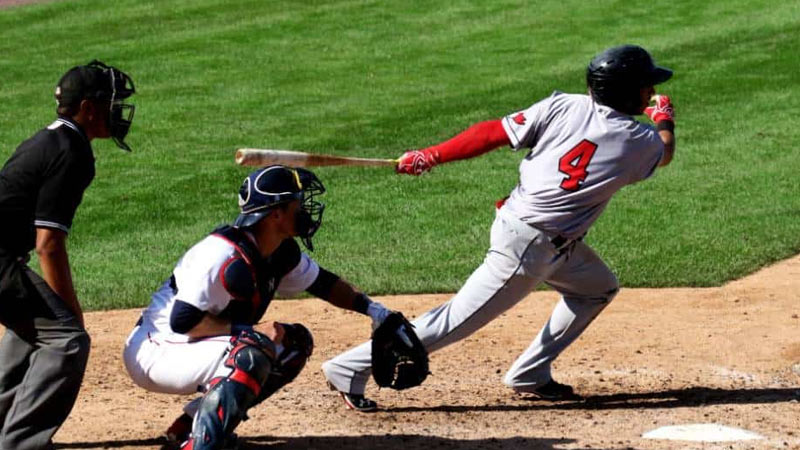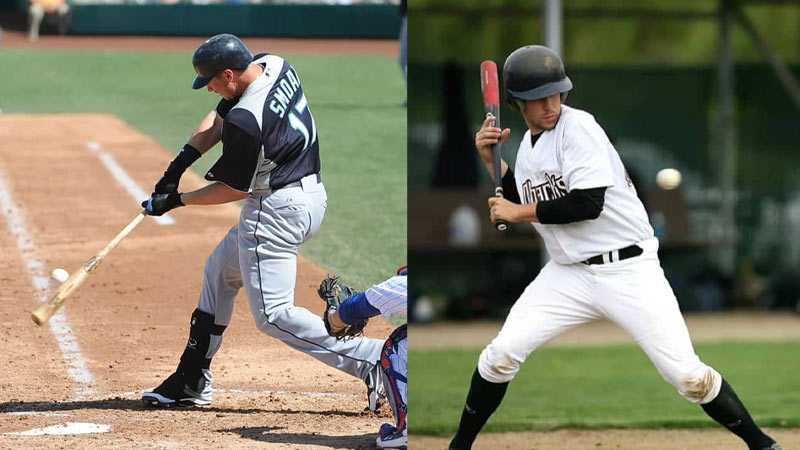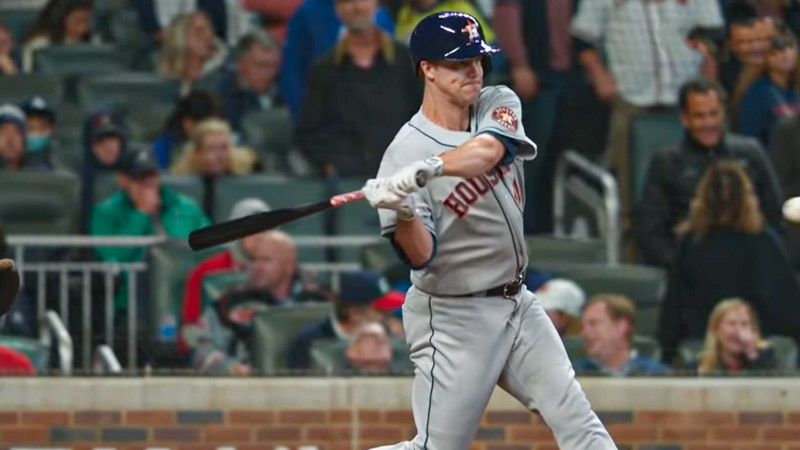Baseball is a game that requires strategy and careful planning. One of the strategic moves made by managers is the use of a pinch hitter. A pinch hitter is a player who is substituted into the game to bat in place of another player.
This tactic is commonly employed to maximize offensive potential, especially in critical situations.
In this article, we will delve into the role and significance of a pinch hitter in baseball, discussing their responsibilities, the rules governing their usage, and their impact on the game.
What is a Pinch Hitter in Baseball?
In baseball, a pinch hitter is a player who comes off the bench to bat for another player in the lineup. The purpose of a pinch hitter is to provide a strategic advantage by utilizing a player who is deemed more capable of getting a hit or producing runs in a specific situation.
Pinch hitters are often called upon when the team needs a crucial hit or when the opposing team has a favorable pitching matchup for a specific batter.
What does a pinch hitter do?
The primary responsibility of a pinch hitter is to provide an offensive spark or advantage to the team. When a pinch hitter is sent to the plate, they must try to get a hit, advance baserunners, or score runs.
Their performance can significantly impact the outcome of the game, as one well-timed hit can change the course of an inning or even an entire game.
A successful pinch hitter possesses a variety of skills. They must be able to analyze the game situation and adapt their approach accordingly.
This includes studying the opposing pitcher, understanding the strengths and weaknesses of their repertoire, and adjusting their batting strategy accordingly.
Pinch hitters often face challenging circumstances, such as facing a relief pitcher with little prior knowledge of their pitching repertoire. They must be skilled at quickly adjusting to the game’s pace and making the necessary tactical decisions to increase their chances of success.
What is the rule for pinch hitters?
The rules for pinch hitters vary depending on the baseball league or organization. In Major League Baseball (MLB), the manager has the freedom to substitute a pinch hitter at any time during the game, as long as the player being replaced has not already been announced as the batter and the pinch hitter has not entered the game in another position.
However, once a pinch hitter is used, the original player they replaced is no longer eligible to re-enter the game.
The decision to use a pinch hitter is often based on careful analysis of the game situation. Managers assess factors such as the current score, the number of outs, the presence of baserunners, and the opposing pitcher’s strengths and weaknesses.
Based on these considerations, they determine if a pinch hitter is likely to provide a better chance of success compared to the current batter. It’s crucial for managers to make informed decisions, as the strategic use of pinch hitters can significantly impact the outcome of the game.
What are the roles of a pinch hitter?

Source: coachingkidz.com
The role of a pinch hitter extends beyond just swinging the bat. They must be mentally prepared to analyze the situation, study the opposing pitcher, and adapt their approach accordingly.
Pinch hitters often face challenging circumstances, such as facing a relief pitcher with little prior knowledge of their pitching repertoire.
They must be skilled at quickly adjusting to the game’s pace and making the necessary tactical decisions to increase their chances of success.
Furthermore, a pinch hitter needs to be prepared to handle pressure. They are often called upon in critical situations where a single hit can turn the tide of the game.
Therefore, mental resilience and the ability to perform under pressure are essential attributes for a successful pinch hitter. Their performance can inspire and energize the team, creating momentum and potential scoring opportunities.
Who can a player pinch-hit for?
A player can be pinch-hit for at any point during the game, although certain situations may call for a pinch hitter more frequently. The decision to use a pinch hitter typically depends on various factors, including the specific game situation, the opposing pitcher, and the manager’s judgment.
Pinch hitters are often used when a team needs a hit to start a rally when there are runners in scoring position, or when a left-handed hitter is needed to face a right-handed pitcher (or vice versa) for a platoon advantage.
The manager’s decision to use a pinch hitter often involves a careful analysis of the game situation and the specific strengths of the players available on the bench.
They assess the current batter’s performance, their historical success against the opposing pitcher, and the potential impact of a pinch hitter based on their track record. This strategic decision-making is crucial in maximizing the team’s offensive potential.
Difference Between a Pinch hitter and a Designated hitter
While both a pinch hitter and a designated hitter (DH) are offensive positions in baseball, there are significant differences between the two.
A pinch hitter is a substitution for a specific player in the lineup, whereas a designated hitter is a player who bats in place of the pitcher in leagues that employ the DH rule, such as the American League in MLB.

Source: baseballbible.net
The designated hitter is a regular position in the lineup, while a pinch hitter is used situationally and can vary from game to game.
The designated hitter rule was introduced to increase offensive production by eliminating the pitcher’s spot in the batting order.
The designated hitter is typically a specialized hitter who focuses solely on offense, while the pinch hitter is often a player who possesses specific skills or attributes advantageous in a given situation.
The pinch hitter may be utilized to exploit favorable matchups against certain pitchers or to provide a much-needed offensive boost in critical situations, regardless of their defensive abilities.
Difference Between a Pinch Hitter and a Pinch runner
While a pinch hitter and a pinch runner both involve substitutions, they serve different purposes in the game. A pinch hitter is used to replace a batter and provide an offensive advantage, while a pinch runner is substituted for a baserunner to increase speed and potentially score more runs.
Pinch runners are commonly used when a team needs to advance a runner already on base, especially in crucial late-game situations where speed and baserunning skills are crucial.
A pinch runner is often chosen based on their speed and baserunning abilities. They are tasked with advancing on the basepaths, stealing bases, or scoring runs. This substitution allows teams to maximize their scoring potential by utilizing players who excel in these areas.
Who Are the Best Pinch Hitters of All Time?
Throughout the history of baseball, several players have excelled in the role of a pinch hitter. These individuals possess the ability to consistently deliver in high-pressure situations, making them valuable assets to their teams.
Some notable pinch hitters include Manny Mota, Matt Stairs, Lenny Harris, and Smoky Burgess. These players have showcased their skills and made significant contributions off the bench, leaving a lasting impact on the game.
Manny Mota, for example, spent much of his career with the Los Angeles Dodgers as a pinch hitter. He holds the record for the most pinch hits in MLB history with 150. His ability to deliver in clutch situations earned him the respect of his teammates and opponents alike.
Similarly, Matt Stairs was known for his power-hitting ability off the bench, hitting numerous key home runs in pinch-hit situations.
Lenny Harris established himself as a premier pinch hitter, setting the record for career pinch hits with 212. Smoky Burgess was renowned for his ability to consistently get on base and produce runs as a pinch hitter.
These players serve as examples of the impact that a skilled and reliable pinch hitter can have on the game. Their ability to come off the bench and contribute in crucial moments solidifies their place in baseball history.
How Many Pinch Hitters Are in an MLB Game?
In an MLB game, the number of pinch hitters can vary depending on various factors such as team strategy, injuries, and game situations. A team typically has a designated lineup of nine players who start the game and occupy specific positions.
However, throughout the course of the game, the manager may choose to substitute one or more players with pinch hitters. These pinch hitters are usually players who are not in the starting lineup but are available on the bench.
The number of pinch hitters used in a game can range from none to several, depending on the circumstances and the manager’s decisions.
FAQs
Can a pinch hitter re-enter the game after being substituted?
No, once a pinch hitter is used, the original player they replaced is no longer eligible to re-enter the game. This rule prevents teams from continually swapping players in and out of the lineup, ensuring fairness and maintaining the integrity of the game.
Is there any limit to the number of pinch hitters a team can use?
No, teams can use as many pinch hitters as they desire throughout the game, as long as the league’s rules regarding substitutions are followed. This allows managers to make strategic decisions based on the game situation, player matchups, and the need for offensive production.
Are there any restrictions on who can be used as a pinch hitter?
In most cases, any player on the team’s roster can be used as a pinch hitter, provided they have not already entered the game in another position.
This allows managers to choose the best available player for the specific situation, considering factors such as the pitcher’s handedness, the need for power or contact hitting, and the player’s track record against the opposing pitcher.
How do managers decide when to use a pinch hitter?
Managers consider various factors when deciding to use a pinch hitter. They assess the current game situation, including the score, the number of outs, and the presence of baserunners. They also evaluate the opposing pitcher, analyzing their pitching style, strengths, and weaknesses.
Additionally, managers may refer to statistical data, historical performance, and matchups to determine the likelihood of success for a pinch hitter. The goal is to maximize the team’s offensive potential in a given situation.
Are there any famous pinch-hit moments in baseball history?
Yes, there have been numerous memorable pinch-hit moments throughout baseball history. One iconic example is Kirk Gibson’s pinch-hit, walk-off home run in Game 1 of the 1988 World Series.
Despite injuries, Gibson was called upon to pinch-hit in the bottom of the ninth inning and delivered a game-winning home run. Another memorable moment is David Freese’s pinch-hit, game-tying triple in Game 6 of the 2011 World Series.
These moments highlight the impact and importance of pinch hitters in critical situations and demonstrate how their contributions can shape the outcome of games.
Bottom Line
Pinch hitters play a crucial role in baseball, providing teams with a strategic advantage in key offensive situations. They are responsible for delivering hits, advancing baserunners, and scoring runs, making their performance instrumental in determining game outcomes.
The ability to analyze game situations, adapt to different pitchers, and handle pressure are vital qualities of successful pinch hitters.
Understanding the rules and nuances of pinch-hitting helps fans appreciate the strategic decisions made by managers and the impact these players have on the game. Thank you for your time.







